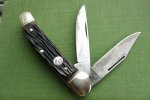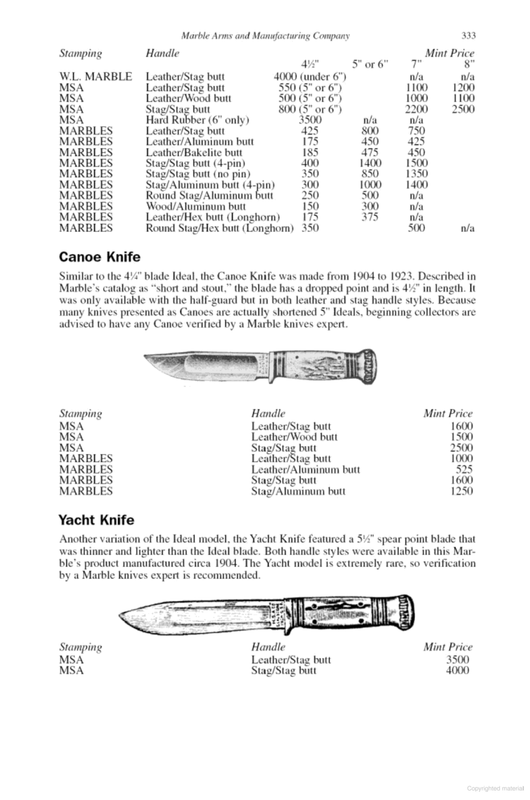Will Power
Gold Member
- Joined
- Jan 18, 2007
- Messages
- 33,462
The folding aspect is interesting, your picture of the Remington is likely the oldest? However, I suspect that c19th Clasp Knives may have had drop-point type Skinner blades.
Levine (1985: 220-221) has a chapter on Office & Letter-Opener Knives where he states 'An "office knife" is a relatively large equal-end pen knife that has a spear master blade for opening letters and a spey type blade to serve as an ink eraser'
These were c19th and early c20th knives. Samples shown include Remington, Ulster, Winchester and the American Shear & Knife Co. which certainly has a 'Spey' that looks like a Drop-Point.
In more recent times the Copperhead pattern often has a Clip and Drop-Point and the Sodbuster introduced by CASE in the 60s sports a similar blade- this is of course a copy of German wooden handled work-knives from the c19th with the same type of blade.
Seems to me the blade in some form existed long before the name was coined and really took off due to innovations in the fixed blade world as mentioned.

Levine (1985: 220-221) has a chapter on Office & Letter-Opener Knives where he states 'An "office knife" is a relatively large equal-end pen knife that has a spear master blade for opening letters and a spey type blade to serve as an ink eraser'
These were c19th and early c20th knives. Samples shown include Remington, Ulster, Winchester and the American Shear & Knife Co. which certainly has a 'Spey' that looks like a Drop-Point.
In more recent times the Copperhead pattern often has a Clip and Drop-Point and the Sodbuster introduced by CASE in the 60s sports a similar blade- this is of course a copy of German wooden handled work-knives from the c19th with the same type of blade.
Seems to me the blade in some form existed long before the name was coined and really took off due to innovations in the fixed blade world as mentioned.







